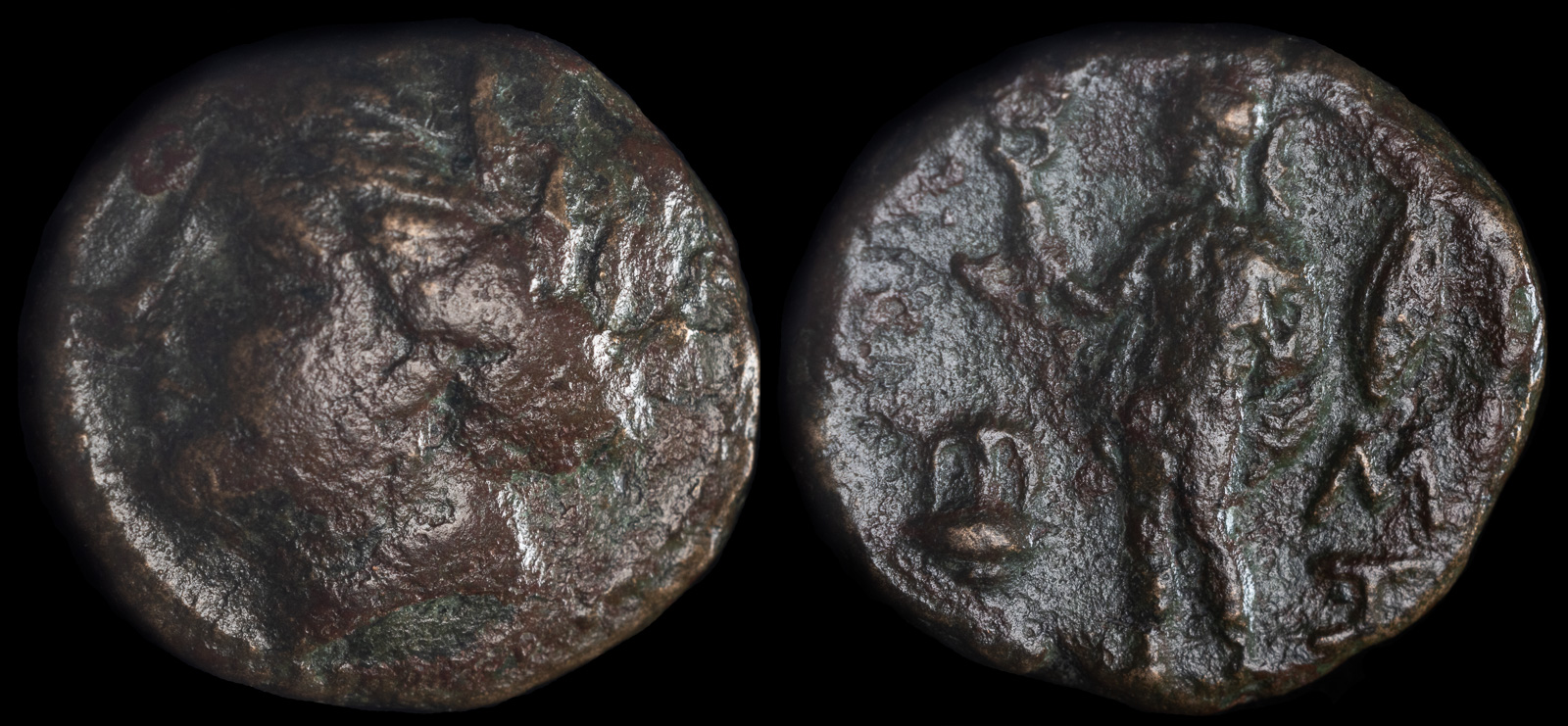
Thrace, Sestos
Circa 400-350 BCE
Æ 1.92g, 12mm, 12h
Head of Athena to left, wearing Corinthian helmet
Amphora; ΣΗ to right, A or monogram to left
H. Von Fritze, Sestos. Die Menas-Inschrift und das Münzwesen der Stadt in Nomisma I (1907), p.7, 19; CN Type 8328; HGC 3.2, 1661 var. (no monogram)
Ex Roma Numismatics
The history of Sestos is intertwined with that of Abydos, which was directly across the Hellespont. As the key crossing site, nearly every historic figure involved between Asia and Europe in ancient times spent time here. The Persians twice crossed from here to Abydos, first against the Persians and again by Xerxes in his famed invasion of Greece.

The Thracian Chersonese, Sestos
circa 300 BCE
Æ 16mm, 4,90g
Obv: Wreathed head of Persephone left
Rev: Hermes standing left, holding kerykeion; amphora to left, ΣΗ downwards to right. c/m
HGC 3.2, 1646. Von Fritze 7-8
Kotys I conquered the city at one point and it was also contested by the Athenian admiral Chares, who killed every man and enslaved the women and children.
Alexander the Great himself crossed here and it was later controlled by Lysimachos.
Sestos is colonized by settlers from Lesbos.
Xerxes I bridges the Hellespont near Sestos.
Sestos is besieged by Athens under Xanthippus. They surrender due to starvation.
Approximate time when Sestos is retaken by Kimon of Athens.
Sestos is occupied by the Spartans under Lysander.
Sestos is occupied by Athenian soldiers under Konon.
Autophradates lay siege to Ariobarzanes in Assos. In exchange for Athenian support, Ariobarzanes gifts them Sestos.
Kotys I besieges Sestos.
Alexander the Great crosses from Sestos to Abydos. He then visits Troy and returns to Abydos. On his way, he sacrifices at the tomb of Achilles at Achilleion.
Romans declare Abdera and Sestos free cities.
Sestos surrenders to Antiochos III.
Antiochos III refortifies Sestos in preparation for a Roman attack.
Sestos surrenders to Gaius Livius Salinator.
Treaty of Apamea. Euromos, Laodikeia ad Lykon, Sestos, and Abydos returned to the Kingdom of Pergamon.
Adramytteion, Smyrna, Sestos, Synnada, Philadelphia, Laodikeia ad Lykon, Attalaia, Erythrai, Ephesos, Perge, and Assos come under Roman control after Attalos III, the last Attalid king, leaves it to Rome in his will.